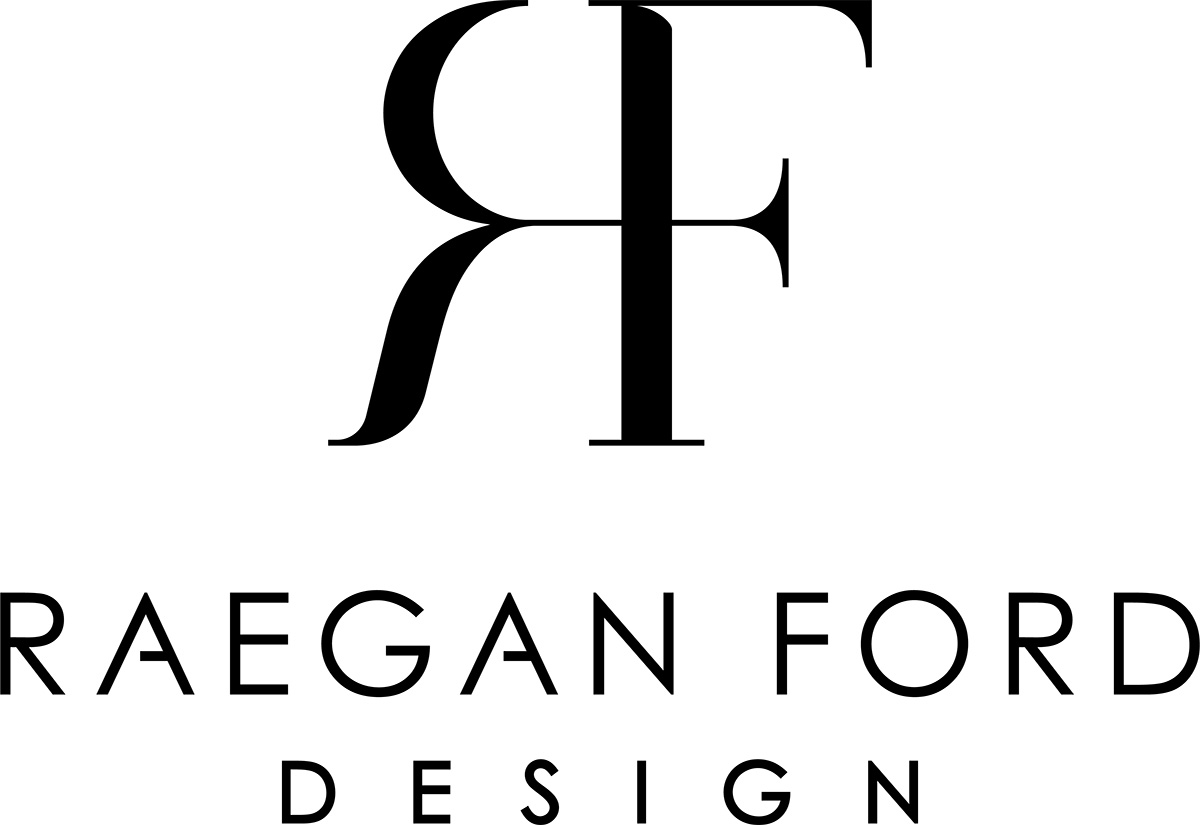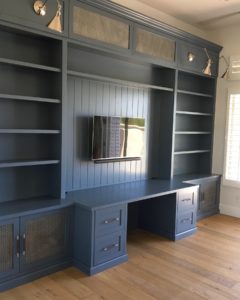When first designing your built-in, it’s important to think about how it will be used within your space. In this example, we designed a built-in home office for a client who required concealed storage, a flat screen TV, as well as open shelving for books. Once you’ve determined your basic needs, you may want to consider unique embellishments such as decorative lighting, hidden outlets, and technology requirements.
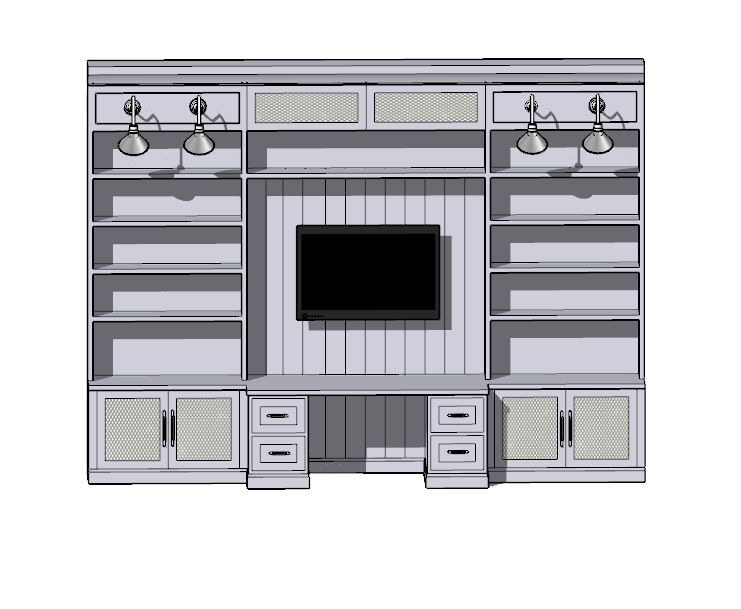
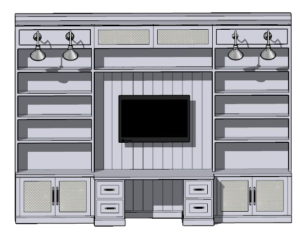
 Decorative Lighting Details
Decorative Lighting Details
Decorative lighting can add character as well as purpose to your built-in. Our client wished to showcase some of their art, books, and other items by utilizing lighting. These adjustable arm sconces feature a star motif on the back plate, which adds a personal touch. We chose a chrome finish on the scones because it provided a pleasant contrast against the slate blue backdrop of the unit.
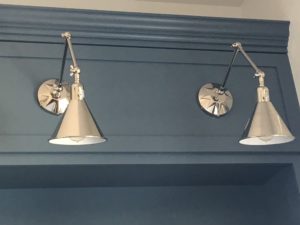
Metal Accents
Perforated metal screens are a great way to add interest but also conceal items. Our client had devices such as a wireless printer and a Bluetooth speaker which required concealment while also being easily accessible. The metal screens allowed the technology to transmit without interruption. Because this home office was being added to an already existing den, we wanted to coordinate with the client’s decor. For this reason, we chose a leather wrapped brushed nickel cabinet pull with a contrast stitch.

The Completed Look
Whether your built-in is being used as a home office, a media unit, a library, or a combination of these, the little details will help elevate your design for an overall more finished look. Designing a built-in can seem like a daunting experience, but by focusing on each individual element, you can achieve a beautiful multi-functional piece.

